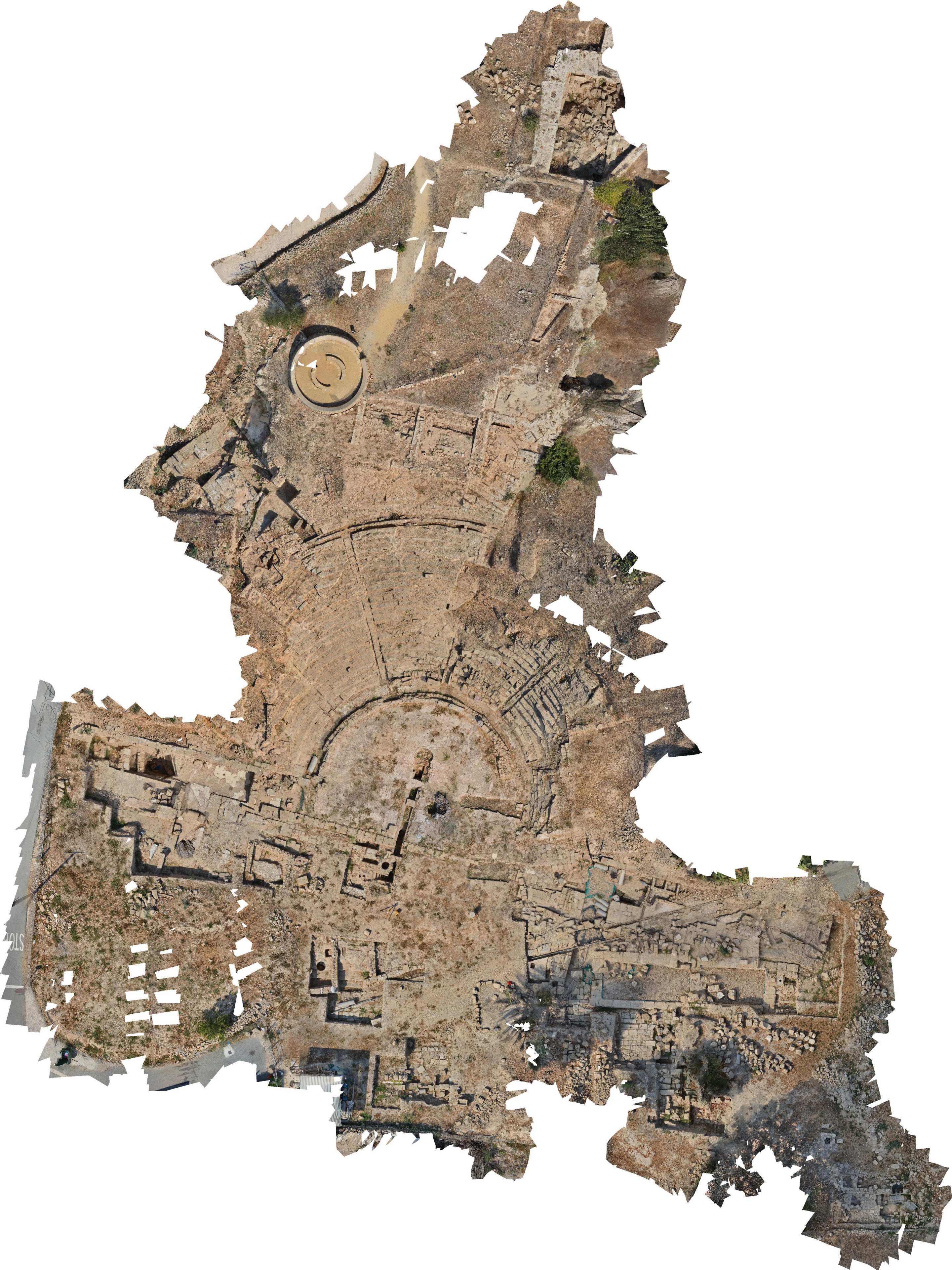Archaeologists uncover Roman roads from ancient Cyprus
A team of Australian archaeologists has uncovered evidence of Roman roads and colonnades in Nea Paphos, the ancient capital city of Cyprus.

Using photogrammetric technology, archaeologists imaged the surviving remains of Nea Paphos's ancient theatre
A team of Australian archaeologists led by the University of Sydney’s Dr Craig Barker has uncovered evidence of Roman roads and colonnades in Nea Paphos, Cyprus’ capital city during the Hellenistic and Roman periods (c.300 BC-400 AD).
The University of Sydney team has been excavating at Nea Paphos for two decades under the auspices of Cyprus’s Department of Antiquities. In that time it has uncovered and studied a theatre used for performance and spectacle for more than 600 years until its destruction in AD 365.
The team’s fieldwork now centres on the urban layout surrounding the theatre precinct, including investigating paved Roman roads and a nearby Roman nymphaeum (water fountain). “The work now is to position the theatre within its ancient urban context,” says Dr Barker, who is also Manager of Education and Public Programs at the University’s museums.
Using GPS mapping, the team recently recorded over 160 fragments of granite columns from surface finds across the town. The granite was imported by Roman engineers from quarries Turkey’s Troad during the 2nd century AD, and used to create long colonnades for main roads. The columns would have weighed several tonnes with four surviving columns measuring more than seven metres.
During the reign of the Antonine emperors the theatre could seat more than 8500 spectators.
The maps of the locations of the fragmentary columns produced by the archaeologists indicate there were two main colonnaded roads in the Roman Neo Paphos. One ran north-south from the ancient harbour to the theatre, and the other is the 8.40 metre road uncovered by the Australians; it runs east-west directly behind the theatre.
“The scale of the Roman trade in monumental architectural elements was massive,” says Dr Barker. “As the capital city of Cyprus at the time, it is not surprising Nea Paphos would be adorned with this architectural demonstration of Roman civic order.”
The theatre precinct was central to Roman activity in the city. The architecture of the theatre was adapted over the centuries according to contemporary tastes in dramatic performance, says Dr Barker. “At its maximum extent during the reign of the Antonine emperors of the 2nd century AD, the theatre could seat more than 8500 spectators,” he said.
While rediscovered 20 years ago, the ancient theatre was recorded with pole photography and photogrammetric programs for the first time in September. This technology stitched together more than 2000 individual high-resolution photos with an accuracy of +/- 10mm. It created an orthographically correct 3D image of the ancient theatre and surrounding areas which will assist with planning future excavation zones and understanding the urban layout of the town.
The group’s excavations have seen more than 400 Australian and international archaeologists, students and volunteers help uncover the remains of ancient Cyprus over the two decades.
Related articles
Resetting the table to halt expanding waistlines
Can farmers, producers and regulators work together at all points of the food supply chain to help curb Australia's growing obesity problem?

Sydney's cyclists twice as happy as other commuters: new research
Sydney's commuting cyclists are twice as happy as people who drive, walk or use public transport to get to work, University of Sydney research reveals.
'Passion' key to being a successful leader
Leadership is about following a passion, having a belief in what you're doing and understanding that people matter, explained NSW Premier Mike Baird at the latest BOSS Emerging Leaders event.
